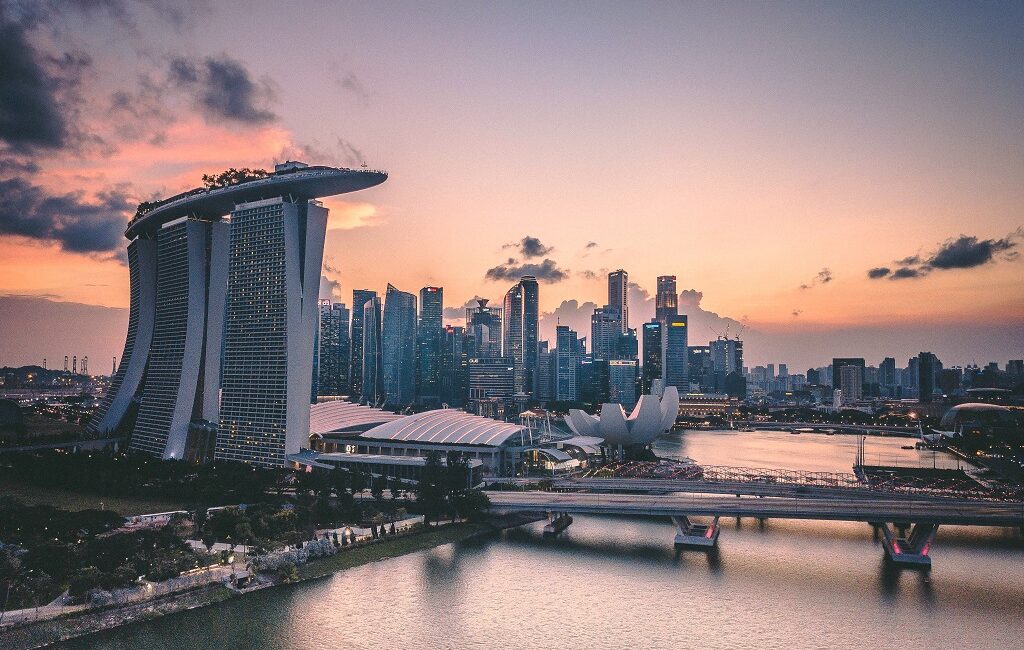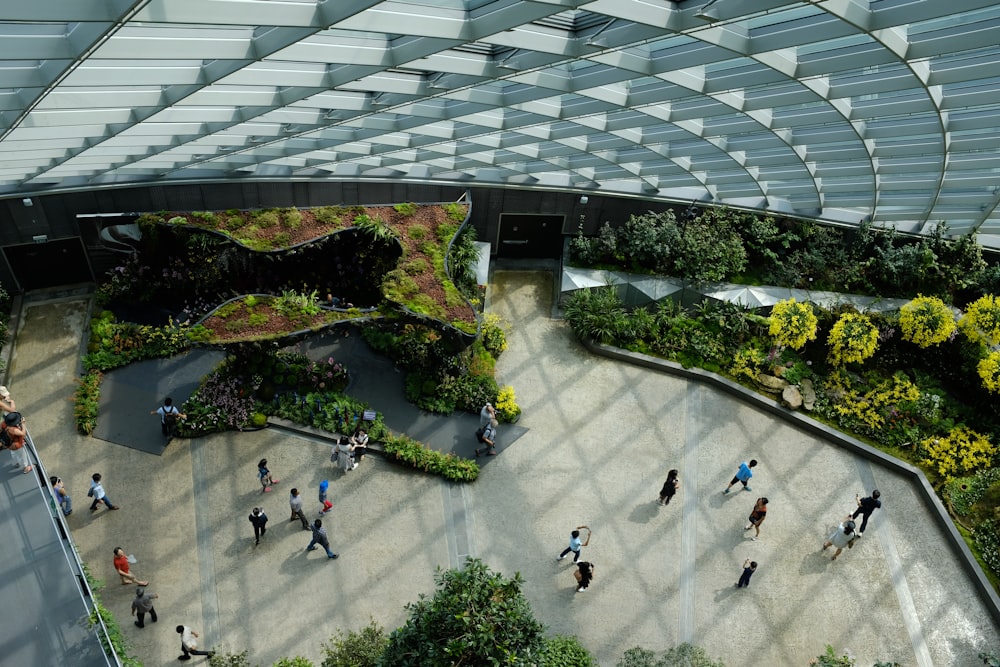Few countries in the world can call themselves an expat’s go-to destination. But based on the 1.5 million non-residents and an additional 500,000 permanent residents who thrive in the city-state, Singapore has become one of the world’s top places for migrants looking to make an international move.
Not only is Singapore a financial and business centre, but the diversity as a cultural melting pot adds to its overall appeal. For anyone looking for better opportunities outside their home country, Singapore is gold.
If you are from Australia and looking to move or relocate to Singapore, there are a lot of amazing things that are waiting for you. The modern amenities, high quality of living, and so many employment opportunities are just some of the major selling points for any would-be migrant.
This article will explore what you need to know to move to Singapore. The similarities and differences between the two countries, and what you should expect and adjust to so you can properly settle down in the Lion City of Asia. Once you’re done reading, you’ll be ready to get started with one of our dedicated relocation experts to start planning your own move!
1. Singapore Has An Excellent Economy
Most people will travel to Singapore in search of better employment opportunities. And who wouldn’t want to work in a country that is considered by the World Economic Forum to have the most open and least corrupt economy in the world?
Singapore has also shaped itself to be pro-business thanks to its super low tax rates, which is rated number one by the 2022 Index of Economic Freedom. Singapore is a true financial and digital hub in the region, and if advancing your career is your goal, making your way there is an excellent step.
You should also check the website of the Ministry of Manpower, as they often list in-demand skills that will make it easier for you to obtain a work pass. With the high rate of foreign nationals, you can clearly see that Singapore is actively searching for and cultivating talent, be it foreign or domestic.
Grab the opportunity that Australia and Singapore have excellent ties, that there are hardly any language barriers, and that the Ministry of Manpower has many initiatives and programs to help foreign workers get into Singapore.
For instance, this can clearly be seen with the updates to the eligibility for the Employment Pass in 2023. The Complementarity Assessment Framework or COMPASS will allow Singaporean employers to select highly qualified foreign professionals while improving diversity and growing Singapore’s Economy.
2. Getting The Right Pass Is Essential To Moving To Singapore
Now that we’ve talked about the excellent economy and many opportunities Singapore has, what exactly is this Work Pass, and is it different from an Employment Pass?
As an Australian, you can visit Singapore without a visa for a limited number of days. But since the goal is to stay in Singapore for longer and further your career, you’ll need to explore the many different types of Passes.
Work Pass is an umbrella term given to a foreign national who wishes to work or conduct business in Singapore. It is more commonly known as a Work Visa. There are several types of passes, depending on your skill level.
An Employment Pass is given to those who are highly skilled or have job offers at a managerial level. It is noted that the salary of an E-Pass holder should be at least 5,000 SGD.
An EntrePass is for those entrepreneurs who wish to conduct and open their business in Singapore, especially regarding innovative technologies.
An S-Pass is similar to the Employment Pass but for jobs which are referred to as skilled or semi-skilled. To qualify, the candidate must have a salary of at least 3,000 SGD a month.
A Work Permit for a migrant worker is for semi-skilled workers whose jobs are in the construction, manufacturing, marine shipyard, process or services sectors.
Several more types of passes cover different industries, but these are probably the most common. Depending on your type of pass, you will be eligible for medical insurance, renewals, primary care plans, and more. The length of your stay is also affected by the type of pass that you have.
You should also note that as long as you have a valid working visa and have worked in Singapore for at least six months, you may apply for a Permanent Resident Visa. This is, of course, very difficult to get, and most people will wait a few years to obtain PR to increase their chances.
Still, that is something that many people will want to visit when the time comes because it grants you more benefits. Universal health care, access to the Central Provident Plan, the chance to purchase homes through low-cost housing via the Housing Development Board, and so much more.
3. Military Service Might Be A Point Of Discussion
One thing to note, however, about becoming a Permanent Resident is the National Service Liability. Any Permanent Resident who is a Male and is at least 16 and a half years old is required to enlist and will then begin their mandatory service at age 18.
However, a first-generation Permanent Resident, that is to say, the one who was given Permanent Resident status, is not required to do service. But, if you have a family or plan on having children, your son will be required to fulfil the mandatory national service.
This might be something you should discuss, as mandatory military training has not been in effect in Australia since the 1970s, and you might have strong opinions on the matter.
You should also note that deferment options are available in certain cases, such as studies. More information is available on the website of the Central Manpower Base for you and your family to discuss.
4. If You’re A Fan Of The Outdoors, Singapore Also Has A Lot To Offer When It Comes To Natural Wonders
Compared with the island city-state of Singapore, the Land Down Under is the sixth largest country in the world. With vast landscapes, rolling hills, sandy deserts, lush forests, snow capped-peaks, thousands of miles of beaches, and the world-famous wilderness that is the Australian Outback, Australia has a lot to offer when it comes to natural resources.
It’s not surprising that many Australians enjoy outdoor activities when they have all that room to have fun in. So, if you are more outdoorsy, and are worried you’ll be stuck in a concrete jungle with no greenery and wildlife in sight, then don’t fret. Singapore has a lot more natural attractions than you might think.
In fact, Singapore has a tropical rainforest. Add to that the Singapore Botanic Gardens, one of only three botanical gardens with a UNESCO World Heritage status, and you’ll have lots of greenery to admire.
On your off days, if you’d like to explore and get some fresh air, here are some places you can visit and get your green on.
- Bukit Timah Nature Reserve
- Sungei Buloh Wetland Reserve
- Labrador Nature Reserve
- Chestnut Nature Park
- Dairy Farm Nature Park
- Singapore Zoo
Whether you’re looking for educational centres to take your kids to, forest trails where you can hike or bike, or to feel the ocean breeze on your face, Singapore has got it all.
5. Ride The Train To See The Rest Of The World
As a continuation of the previous entry, there’s also another factor about the size of Australia that you might miss. Long drives or land travel.
Of course, you could always fly, but some people enjoy long drives. The many stopovers in between major cities. Just looking out the window and appreciating the space there is.
Travelling by land from major city to major city in Australia can easily take 12 hours at least. Melbourne to Sydney is around 12 hours, and Sydney to Brisbane is another 14 hours. The train industry in Australia is very much alive with some trails going through some parts of the outback. Meanwhile, these trains’ service is excellent, offering maximum comfort.
As a small country, you might think Singapore won’t have similar services available. Well, you’d be wrong.
There are several trains that you can ride. You can start in Singapore and go to nearby countries such as Thailand, Cambodia, Malaysia, and even all the way to Europe! Although there will be some transfers along the way, if long train rides and land exploration are your cup of tea, many choices are available.
However, you’ll have to make adjustments when it comes to drives. In Singapore, people are legally required to have a certificate of entitlement to own a carfor the next ten years. Thanks to limited roadways, the Singaporean government created this scheme to avoid traffic and congestion.
You should also note that the certificate and the purchase of a vehicle itself are very expensive in Singapore, thanks to these restrictions. So, public transport is the way to go if you need to commute. No need to worry, though–public transport in Singapore is some of the best and cheapest in the world.
To go around the city you can opt for Basic Bus rides, the North East Line (NEL), and Downtown Line (DTL) which start at only 0.99 SGD for the first 3.2 Kilometres. Even cheaper are the LRT and MRT lines which are only 0.49 SGD for the same 3.2 Kilometres. Prices then increase for every kilometre increment of roughly around 0.10 SGD.
Although, you should note that these prices are what you would get if you use fare cards. They offer great discounts for your daily travels which can really add up in the long run. If you pay in cash, that 0.99 SGD becomes 1.70 SGD, so, it’s always better to get the card and be sure that it’s topped up.
In addition to bus and railway systems, there are also a lot of taxis available throughout the city. Fares start anywhere between 3 to 3.4 SGD as the flag down rate, which also includes the first kilometre. 0.22 SGD is then added to the bill for distance travelled or for every 45 seconds of wait time.
This pricing might be a bit of a shock as taxi rates in Australia are quite high. Using Sydney as an example, the flag down rate for regular hours is 3.6 AUD (3.36 SGD) which is more or less the same, but for every kilometre thereafter, Sydney taxis charge 2.19 AUD (2.04 SGD). The per kilometre charge is almost ten times more! So, in Singapore you won’t have to worry as much when going around the city or having to wait for a while in traffic, it won’t burn a hole in your pocket!
6. Housing In Singapore Is More Or Less The Same As In Australia’s Capital, Sydney
Singapore has one of the highest population densities in the world. With 7,800 people per square kilometre. Thanks to this fact, housing in Singapore can get expensive. That’s why most expats will live in urban housing units such as condominiums or apartments. Santa Fe’s customised pre-move consultation and household survey can help you plan for what to bring with you.
These are very attractive properties, especially to younger urban professionals, thanks to amenities such as pools, gyms, and playgrounds and their proximity to restaurants, shopping centres, and other establishments.
Due to Singapore’s very heavily regulated housing market, there are several rules and regulations on who can own property. That’s why renting is the most common choice for expats.
As a point of comparison, Singapore’s rental prices are very close to that of Sydney’s, which is considered to be Australia’s most expensive housing market. If you are looking for a one-bedroom near the city centre, it will cost around 2,600 SGD. For a small family of four in search of a four-bedroom apartment, it can go as high as 6,000 SGD, depending on how close you are to the city centre.
Another thing that you should prepare for is banking in Singapore. Having access to your money from a safe and accessible platform is essential. It will be easier for you to budget and keep track of your finances and use several online services to make payments.
Banks like DBS Bank, OCBC, Citibank Singapore, Maybank, United Overseas Bank and HSBC are all excellent choices. You should also check your local bank in Australia and see if you can open an international bank account or connect your Australian bank account with your Singaporean bank account. This way, it is easier to transfer funds if and when necessary.
7. Education For Your Kids Will Be Top Notch
If you plan on having a family, you’ll be glad to know that the quality of education in Singapore is some of the best in the world.
You’ll be glad to know that Singapore is home to the leading international schools in the world, and yes, the Australian International School is in Singapore. International Schools are the most common choices for expats. Their kids will be able to receive top-quality education but also have lessons and influences from the schooling system from their home country.
These schools can train the kids through multilingual instruction and will also have excellent facilities to aid your child’s education.
Once they are ready for University, or even for you if you’d like to pursue higher education, Singapore has six public universities and several colleges and waiting! Two of which are even ranked in the top 15 Universities in the world!
8. Keep All Your Important Documents At The Ready
Moving takes a lot of work. Between the packing, the plane tickets, and the boxes, one of the most important things to keep track of is the paperwork.
You’ll be surprised by just how much paperwork relocating to a different country needs. So, to ensure you are always on track, you should get all your documents in order. Buy a binder, keep originals, make copies of everything, and label neatly.
To start, you should have all these documents ready.
- Passport
- Birth and Marriage Certificates
- Bank Statements and Credit Reports
- Medical Documentation (Dental, Immunisations, Vaccinations, Covid Tests)
- University Degree or Relevant Certifications
- Police Background Check
- Work Permit/Employment Contract
- Customs Clearances
As well as any other documents outlined on Singapore’s Immigration Website. You should always check if there are any so you can stay up to date.
9. The Right Moving Partners Can Make Or Break Your Relocation
Flying from Sydney, Australia, to Singapore will take about 8 and a half hours. And that’s just air time. When moving overseas, the hours you will spend prepping, making sure everything is ready, that nothing is left behind, that all the paperwork is in order… It can get overwhelming.
That’s why you’ll need the best moving partner you can get. Santa Fe has years of experience helping people change their lives by relocating to new places locally or internationally with our comprehensive offering of moving services.
You won’t have to worry about your belongings as they will be well taken care of by Santa Fe’s shipment protection services. You’ll just sit back, relax, and enjoy your flight to a new life that awaits you!
Conclusion On Moving To Singapore From Australia
Singapore is at the top of the list when it comes to quality of life, education, health insurance, and public transportation. It is also a cultural melting pot that has become a home to millions of people who hail from all corners of the world.
It is a financial hub and boasts one of the highest per-capita GDP on Earth. Hundreds of large companies and startups thrive in Singapore, providing many amazing opportunities for both traditional businesses and those in digital sectors.
As a future Australian Expat, if there’s any place you should consider moving to and starting a new life, you won’t be wrong going to Singapore!
Still not convinced? Try to read up on some of our guides to other amazing cities such as Hilo, Barcelona, Juneau, or Mesa.
Frequently Asked Questions About Moving To Singapore From Australia
Is Moving To Singapore A Good Idea?
Yes, Singapore’s excellent mix of cultural diversity, financial opportunities, and high quality of living makes it one of the best places there for Expats.
Is Singapore Expensive To Live In?
Yes, Singapore is one of the most expensive Cities to live in. However, the quality of living in Singapore is also one of the highest in the world, and there are lots of opportunities for high-paying jobs.
How Hard Is It To Get Residency In Singapore?
Due to the annual quota, becoming a Singapore Permanent Resident will take time and effort as well as having to comply to strict rules. There are several requirements and considerations that immigration takes into account for permanent residence, such as length of stay, profession, financial stability, and much more.
How Soon Should I Engage With Santa Fe Before My Relocation?
You should engage with us at least three months before your intended date of travel to give our staff and you to prepare. Call or Email us at the information provided on our website, and one of our representatives will gladly assist you.




